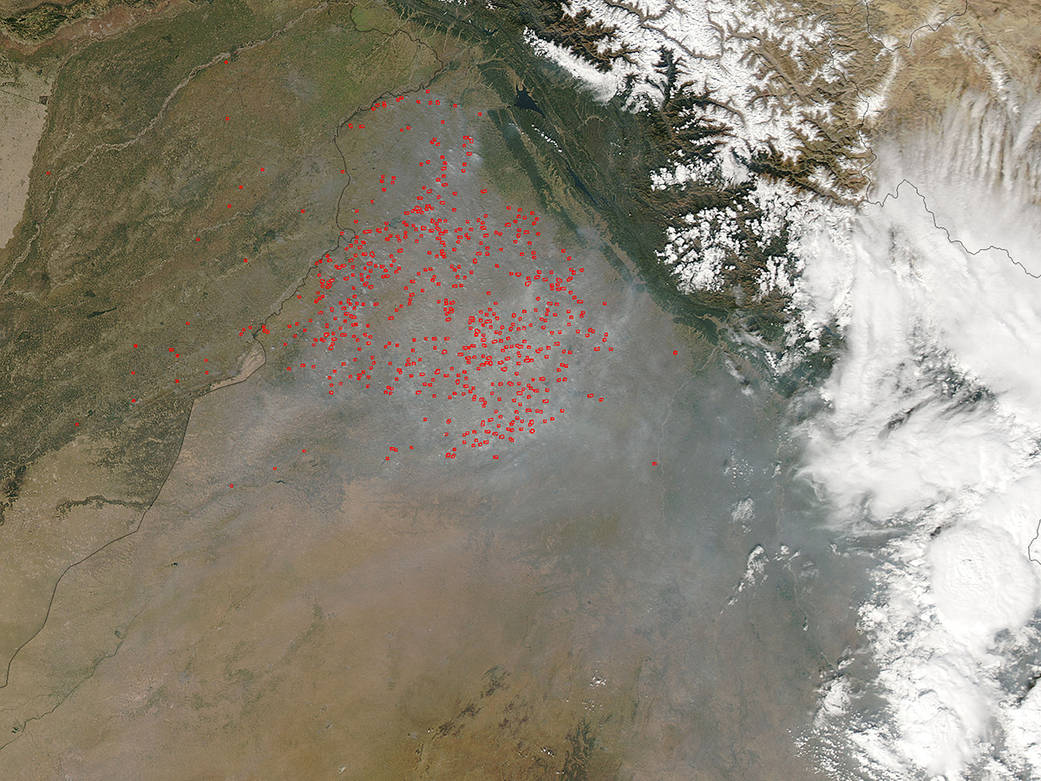The Indian state of Punjab has two growing seasons—one from May to September and another from November to April. In November, Punjab farmers typically sow crops such as wheat and vegetables; but before they do that, farmers often set fire to fields to clear them for planting. That was probably the case on October 29, 2015, when the Moderate Resolution Imaging Spectroradiometer (MODIS) on NASA’s Aqua satellite captured this natural-color image.
Red outlines show the approximate locations of active burning. Punjab comprises only about 1.6 percent of India’s land surface, but thanks to fertile soils and the adoption of agricultural advances, the state grows about one-fifth of India’s wheat. Preparing for planting with fire has the benefit of clearing out some pests that eat crops and turning crop residues from the previous season into fertilizing ash.
But the smoke also can harm human health, aggravating heart and lung disease. Humans evolved in the presence of fire and healthy young adults can generally withstand vegetation smoke. But older adults, children, and people with chronic health conditions are at risk. The smoke may include thousands of compounds, including carbon dioxide, carbon monoxide, nitrogen oxides, and particulate matter. These components have the potential to affect human health, but exactly how different types of smoke affect people is not yet fully understood.
NASA’s Aqua satellite collected this natural-color image with the Moderate Resolution Imaging Spectroradiometer, MODIS, instrument on October 29, 2015. Actively burning areas, detected by MODIS’s thermal bands, are outlined in red. NASA image courtesy Jeff Schmaltz LANCE/EOSDIS MODIS Rapid Response Team, GSFC. Caption by Lynn Jenner with information from NASA’s Michon Scott



























